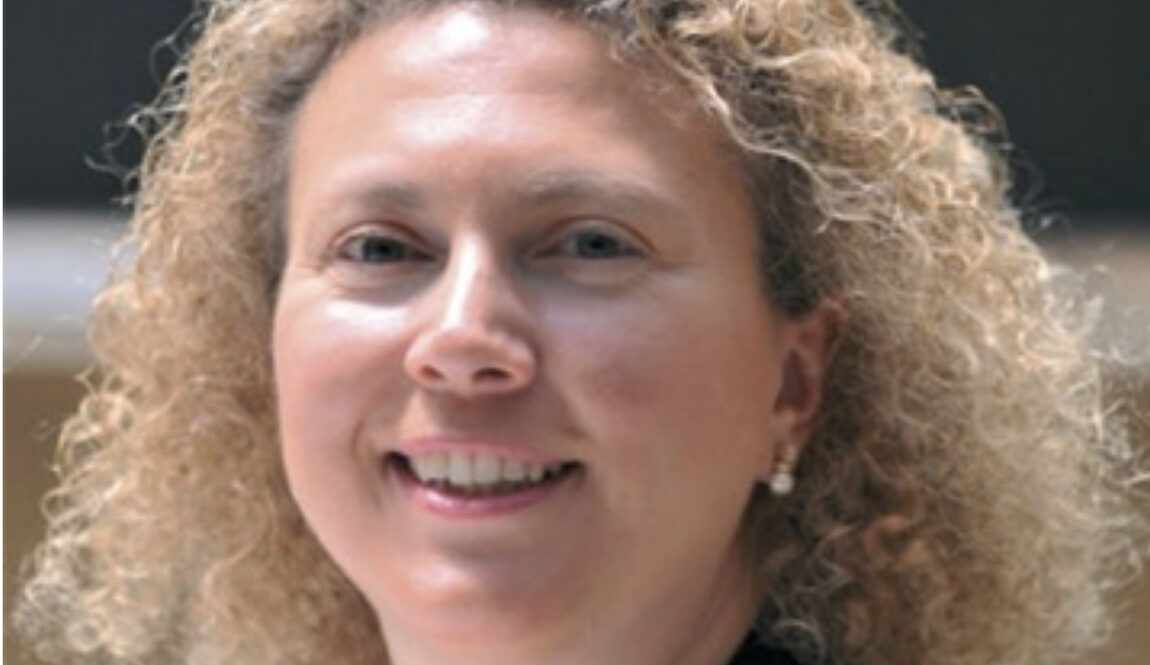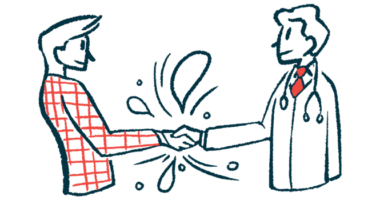Northwestern researcher is hoping to change how ALS is treated
Hande Ozdinler says no single drug can likely treat this complex disease

Researcher Hande Ozdinler is studying the connection between upper motor neuron loss in the brain and ALS. (Courtesy of Hande Ozdinler)
For years, researchers have been chasing a so-called silver bullet compound that could effectively treat anyone with amyotrophic lateral sclerosis (ALS). Hande Ozdinler, an associate professor of neurology at Northwestern University, thinks that this approach should be reassessed and a different, more nuanced view of ALS treatment should be adopted.
Rather than waiting for a single miracle drug, she argues, progress will come from understanding the complex biology of ALS — especially the overlooked role of upper motor neurons, a group of nerve cells, in the brain — and by designing therapies that address the disease’s many moving parts.
In this conversation, Ozdinler discusses why so many ALS trials have failed, how her team is breaking new ground by studying upper motor neurons, and why shifting both our science and our expectations could finally open the door to more effective treatments.
The interview was excerpted and lightly edited for clarity.
AB: I was wondering if you could first tell me about your ALS research and its significance for people with ALS.
HO: We initiated the first research lab that primarily focuses on the biology and pathology of upper motor neurons. We are trying to understand why the upper motor neurons become vulnerable and why they undergo progressive degeneration in ALS patients.
Movement starts in the brain, and the brain is an important component of the motor neuron circuitry that degenerates in patients. But despite its importance, the emphasis has not been on the cortical component [part of the brain that plays a role in functions like thinking, memory, and emotion].
Even for clinical trials, the compounds are not really tested for their ability to improve the health of upper motor neurons. We think this is an untouched and significant territory.
What is the practical application of this research?
There are many. One of the outcomes of the research will be to understand why upper motor neurons become vulnerable and the molecular signature for their degeneration. Once you reveal that, this opens the gates for revealing novel drug targets, treatment strategies, and biomarkers that would inform us about their degeneration.
Also, biomarkers will tell us about pharmacokinetic changes, changes that occur over time. This would be crucial for efficacy studies that are important to Phase 2 and Phase 3 clinical trials.
To develop an effective treatment strategy, you first need to understand “why.” Once you understand [the] why, then you can actually lay the foundation for translational research. This path would be an important outcome for our research because we want to lay the foundational framework for clinical trials for patients with upper motor neuron loss.
We believe that one of the reasons for most clinical trials failing over the years is also because the cortical component has been kept out of the picture.
And why is that? Why has it been kept out of the picture?
Many technical and also conceptual limitations. One of the conceptual limitations was that people believed that the cortex did not matter in ALS.
They thought that the progressive degeneration was linear and going from the periphery towards the cortex, and that cortical degeneration was the last thing that happened.
“Who cares about the upper motor neurons?” was the motto. They didn’t really appreciate the importance of the brain. So that was the major conceptual limitation. That’s number one.
And number two was the technical limitation. Because the cortex is very heterogeneous and complex, there are hundreds of different neuron types. And upper motor neurons are very small in number. They’re embedded in deep layers. How are you going to study them? It was technically challenging and almost impossible. But recent evidence has come to first suggest and then to reveal that the cortex is indeed very important.
Degeneration starts in the brain as well, with spine loss, with mitochondrial dysfunction [problems with cellular energy], with protein aggregation [clumping], so that these upper motor neurons show signs of neuronal degeneration much earlier than symptom onset.
There is cortical hyperexcitation. When they shout, they become so active, they cry out loud, and then they become silent, lose their connections, spines, and they fall out of the loop and the circuitry. Then it becomes even harder to activate them. And that’s when the degeneration accelerates.
We now understand how important the upper motor neurons are, so that the conceptual roadblock has been removed. And we [have] also made important advancements in the technical obstacles. So those are removed as well. I think by removing both the conceptual and technical obstacles, we open a new path forward.
This also opens up new avenues for other rare diseases like primary lateral sclerosis (PLS), hereditary spastic paraplegia (HSP), and even spinal cord injury. Understanding why upper motor neurons degenerate, how they degenerate, and what the mechanism is that kills them actually allows us to develop new therapies to make them happy, to keep them integrated, and to make them functional.
And once the upper motor neurons are functional, then the motor neuron circuitry becomes functional because the order goes from the brain to the spinal cord, then to the muscle. Therefore, we propose that keeping the brain happy, healthy, and integrated is the way forward for developing effective and long-term treatment strategies for ALS.
How soon do you think this research could be applied to drug development?
I think very soon, because we — in collaboration with Dr. Silverman [a professor of chemistry at Northwestern] — identified the first compound, NU-9, that improves the health of upper motor neurons that are diseased due to misfolded SOD1 toxicity and TDP pathology. And we also begin to understand the mechanism of action of this compound.
First of all, it reduces protein aggregation. It improves the architectural integrity of mitochondria, especially at the inner mitochondrial membrane. It improves the endoplasmic reticulum. It enhances axonal growth. There are many things this compound does to keep motor neurons happy and healthy.
Interestingly, some of these cellular events are shared by other neurodegenerative diseases, such as protein aggregation and mitochondrial problems. Now, in collaboration with Dr. Klein, Dr. Silverman found that this NU-9 has implications in clearing beta amyloid aggregates in Alzheimer’s disease. So now we have a compound in our hands that can reduce the cellular pathologies that result from the aggregation of misfolded SOD1, TDP, and beta amyloid.
As you can appreciate, those are three independent and distinct proteins, very different from each other, and are the basis of some key neurodegenerative diseases that affect more than 75 million people in the world right now. And as far as I know, NU-9 is the only compound that can have such broad implications on these three different proteins.
Dr. Silverman formed a company, and he licensed NU-9. We wrote an application to the FDA to start our Phase 1 studies, and the FDA approved our quest to start Phase 1 clinical trials. So, as you ask, how early can this be? It could be as early as tomorrow. We are still in the fundraising period, and hopefully, as we raise sufficient funds, we can start Phase 1 clinical trials soon.
In our studies with biomarkers, which were funded by the [U.S.] Department of Defense (DOD), we hope to identify novel biomarkers that would tell the timing and extent of upper motor neuron loss in patients.
Are there any other current trends and developments in ALS research that patients with ALS should know about?
Yes, there are many. And if you go to ClinicalTrials.gov and search for ALS, you will see that there are 34 active clinical trials in ALS. It is an active area of research. There are numerous compounds that act on distinct cellular pathways.
For example, there are some that act on mitochondria or lipid homeostasis, or cytoarchitectural dynamics. So, they pick one pathway and focus on that pathway as the primary cause.
[There is] a new FDA-approved drug using ASO [antisense oligonucleotide] against the mutations in the misfolded SOD1 gene. I think the technology opens the door for many other mutations, and they would be effective, especially for mutations that have a gain-of-toxicity problem, which means the lack of that gene is not a problem, but a mutated form of the gene is actually toxic. ASO treatment removes the mutated form.
What are some of the challenges that still need to be addressed when it comes to ALS research and treatment?
To be honest with you, some of our problems are conceptual problems. Let me elaborate on that. For example, thinking that one drug is going to bind to one target and it’s going to do one thing, which will cure all ALS patients, is a mental block. This is not going to happen. We are all waiting for Godot [the never-appearing character from Samuel Beckett’s play “Waiting for Godot”] to come. Godot is not going to come.
When you are trying to raise funds, they keep asking, “Where does it bind to?” They want to know the target, just one target, one protein. We suffer from our linear thinking mode. We want simple solutions to complex problems, we want one thing to fix it all, we all want Godot to turn around the corner, but complex problems will have complex solutions, and we first have to overcome our own mental block.
Because if we do not, our favorite compound may pass Phase 1 [testing], Phase 2, but it sure will falter on Phase 3. Not because the compound is bad, or the pathway it targets is not important, but because ALS is heterogeneous, because not all patients develop the disease due to the same underlying cause.
So, we first need to change our conceptual thinking. The reason we fail is not because the compounds that have been tested are unsuccessful. The reason we fail is us, our unfounded expectation that one molecule is going to cure us all, and we are all chasing after that one drug.
And I’m telling you, Godot is not coming. We shouldn’t be running after a miracle. We should be working with a scientific rationale and a scientific reality. One drug, one target, one action is not and will not be good enough for all patients. We must either focus on cellular pathways — and not just one protein — as a target, or develop compounds that can simultaneously overcome multiple cellular problems.
We first need to change our conceptual thinking. The reason we fail is not because the compounds that have been tested are unsuccessful. The reason we fail is us, our unfounded expectation that one molecule is going to cure us all, and we are all chasing after that one drug.
In my opinion, one of the reasons why we are still waiting for Godot is also because of how the FDA approaches drug discovery. When the FDA was established in 1906, the definition of each disease was based on clinical manifestations. At the time, they did not know about molecular biology and did not have any access to proteomics, lipidomics, metabolomics, or RNA-seq data.
The idea at the time was that diseases were separate and distinct entities with different clinical outcomes. Therefore, the goal was to eradicate the disease by finding a drug to cure Alzheimer’s, to cure ALS, and so forth. That’s how Godot was born.
Today, we know genetics, all omics, and many advanced technologies, which tell us that diseases share so much in common. For example, even though different proteins aggregate, protein aggregation is a commonly shared problem. Likewise, even though there are many ways the mitochondria may be defective, the mitochondrial problems are common.
If the FDA were established today, I don’t think it would define diseases as it did in 1906. It is very possible that it would say: “These are the cellular mechanisms that lead to different neurodegenerative diseases, and we need drugs that would address those disease-causing cellular mechanisms.”
I think the FDA would appreciate a mechanistic insight into drug discovery efforts and would switch the mindset from “We’re going to cure a disease,” to “We are going to overcome disease-causing mechanisms.” This should be our quest today, as we live in a scientifically advanced world. If we cannot reflect our scientific advancement and understanding in our drug discovery efforts, we might be stuck in the 1906 mindset and continue to fail.
So, would you say that the current drug development and drug approval process should be redesigned or adjusted?
I wouldn’t go that far to say that, but I truly believe committees should be formed, and this should be talked about and discussed. The recent scientific developments need to be integrated into what is currently available. We should not be really fixed on the question of “Where does it bind to, and which disease are you going to end?”
When a drug fails in Phase 3, it is about a $40 million loss. So, multiply this by at least 35. See how much money we have lost already? It has been an immense loss. And in fact, none of the drugs completely failed. Some actually worked really well on some distinct patient populations. But we ignored them because of the p-value. They were not significant.
Maybe, moving forward, our goal should be to cure as many patients as possible, with the expectation that different patients may be cured by different treatment strategies, and one drug will not be a solution for all.
Without healing all patients, we can’t really end the disease. Therefore, we must invest in a mechanism-focused drug discovery effort and help patients by overcoming the cellular and molecular underpinnings of their disease-causing mechanisms. A patient-centric and mechanism-focused drug discovery is the way forward.









